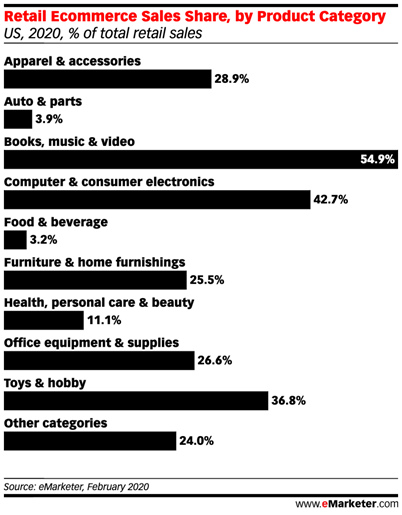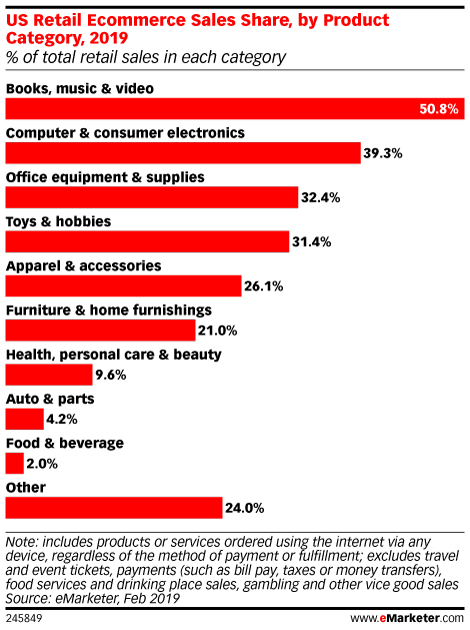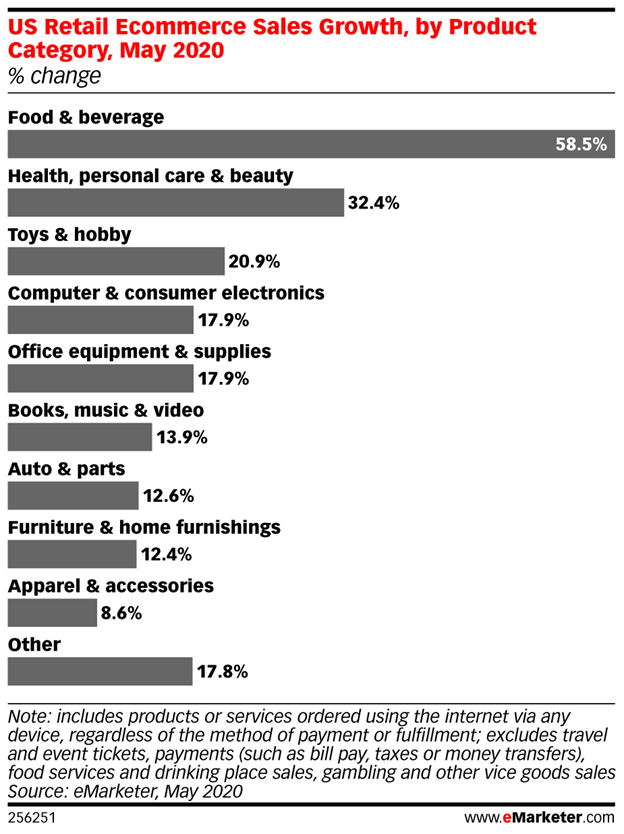Trends in E-commerce
By Mitchell Anthony
September 3, 2021
E-commerce is an exciting industry that contains some of the most innovative companies in the world like Amazon and Ali Baba. The technology and innovation of these companies is shaping the landscape of the global economy changing trends in consumption and providing employment opportunities for hundreds of thousands of people. The industry is still very small and in the early phases of development and adoption by consumers worldwide. The current advancements in technology are enabling the industry to position itself for strong growth, and moderate valuations relative to growth make the industry leaders ripe for investment.
The Industry Today
Just 13.3% of all retail sales occur online – up from 10.6 % in 2019. How Big? – 222 Billion of goods and services are sold digitally online annually in America. That’s roughly 14% of Total Annual retail sales of 1.7 Trillion. If we look at the Size by sub-Industry in percent of retail sales we find Food at 3.2%, Autos 3.9%, Health, Persona Care, & Beauty 11.1%, Furniture 25%, Office equipment & Supplies 27%, Toys & Hobby 37%, Consumer electronics 43%, and Books & Music the largest at 55%.
The Industry is growing at 18.3 % over the last 2 years Q219 – Q221 (10.6% total to 13.8%). Looking at sub-industry growth we find growth of 58% for Food & Beverage, 32% for Health, Personal Care, & Beauty, 21% for Toys & Hobby, 18% for Consumer Electronics, 18% for Office Products, 14% for Books & Music, 13% for Autos & Parts, 12% for Furniture, and 8.6% for Apparel.
At first blush, one might think computer literacy and the availability of a computer in the household might impact the ability for online digital purchases to grow and evolve. However, research found this not to be an issue as Computer literacy and availability within the US Population is 81%. Looking at the literacy and availability by race we find the literacy and availability to be 89% for whites, 78% for Blacks, and 65% for Hispanics. This is seemingly not impacting adoption or is only a minor obstacle. The growth of the industry would seem to be more dependent upon technology and will be highly impacted by the development and innovation of technology to make online shopping as pleasurable as shopping in a store or better. E-commerce companies are currently working hard to improve:
- Product visibility
- Quality assessment for non-commoditized items or Non-branded goods.
- Some items may never be great online sales products. Meat, Produce, custom apparel, etc – touchy-feely products. Very dependent upon technology for these to have meaningful online sales.
Amazon is the dominant player in e-commerce with 40% share of all online sales. The Other players are far behind with WMT at 7%, Ebay at 4.3%, and AAPL at 3.7%. These companies are experiencing substantial growth in their e-commerce businesses and their stock valuations are reasonable with their price to earnings ratio less than two times their growth rate.

——————————————————————————————————————

——————————————————————————————————————
